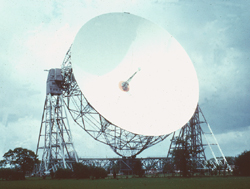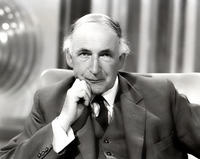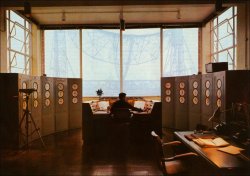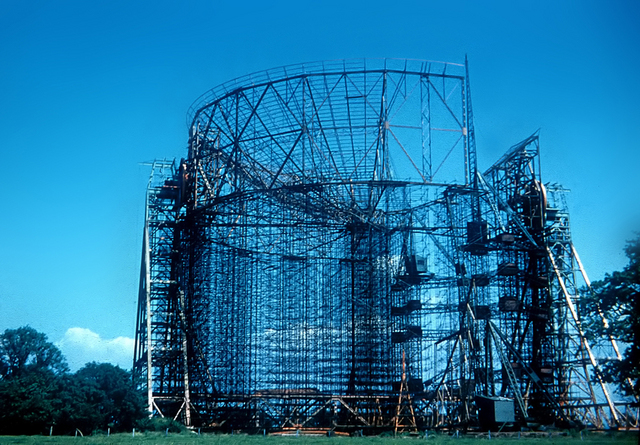The 250ft Mk I Radio Telescope
With Charles Husband, a consulting engineer based in Sheffield, Bernard Lovell planned a 250ft (76m) telescope that could be pointed to any part of the sky - a fully steerable telescope. It was originally designed to work at comparatively long wavelengths which would only require it to have a wire mesh surface but the detection of the 21cm Hydrogen Line in 1951 led to the design being changed. Instead it was given a solid steel surface so that it would be able to make observations at this highly important frequency.
After a series of technical and financial problems the telescope was finally ready for trials in the summer of 1957. It was driven by an ingenious electro-mechanical analogue computer which controlled the motors in both Azimuth and Elevation so that the telescope could follow a radio source as it moved across the sky.
The picture on the left shows the Mk 1 Control Room in its original form. The racks behind and to the right and left of the control desk contain the analogue computer system which provided the command signals to the telescope's drive motors.
The bowl was entirely supported on giant bearings at the top of the two towers. The gear racks by which the bowl was rotated in elevation came from the 18-inch gun turret racks from the battleships HMS Royal Sovereign and HMS Revenge! Beneath the bowl is seen a thin stabilising girder which carried no weight, but was there to prevent the bowl oscillating in the wind.
Two motors at the base of each tower drive the the telescope in azimuth around a central bearing. This, and the bearings at the top of each tower, contain cable turners so that continuous cables could be led to and from the Focus Box mounted at the top of the central tower in the bowl.
In October of that year the Soviet Union launched the first satellite into earth orbit, Sputnik 1, and the Mk1 was able to track the third stage of the carrier rocket by radar. This brought it into the public's eye and it was realised that Britain had built a unique instrument which was in great demand for commanding and receiving the telemetry from US and USSR satellites, particularly those venturing far out into the Solar System.
This was never a major part of the Telescopes' work, but partly by payment for the use of the telescope and then by a very large donation by Lord Nuffield and the Nuffield Foundation the debts outstanding on the telescopes' construction were cleared. The Jodrell Bank Experimental Station accordingly became the Nuffield Radio Astronomy Laboratories.






